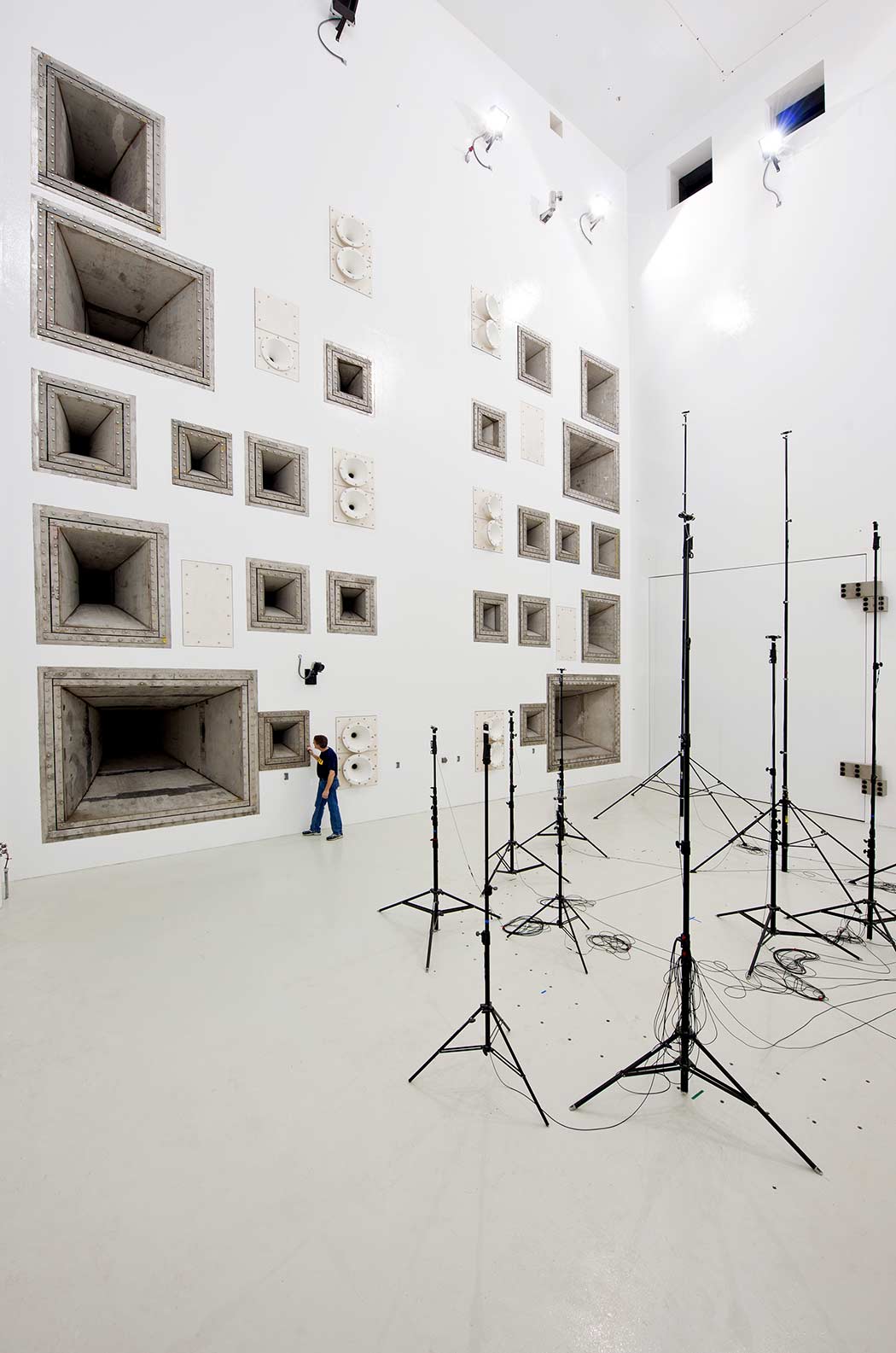
Rocket research isn’t something you might associate with professional audio but when you are firing people into space, you need to check your ship is up to the job.
Obviously it’s not practical to launch that many rocket test flights – the fuel cost alone would probably bankrupt the space programme, so how do you check that all the engineering maths is correct and that the ship’s hull, chassis and everything else, is going to withstand the forces generated?
You could build scale models and stress test them but why do that when you can build a chamber big enough to house rocket propulsion systems and recreate the pressure levels in a real launch scenario?!
NASA’s Space Power facility at Plum Brook Station in Ohio houses exactly that sort of chamber, and XTA processing helps make these tests possible.

It takes some serious power amps to drive a system like this…
The massive acoustic chamber is excited with a variety of LF and HF pressure transducers, capable of generating pressures well over 150dB across a wide spectrum to simulate what would be happening at a real launch.
The drive signals are part of a closed loop system utilising the microphones placed throughout the chamber, and then fed on to power amplifiers and displacement clippers (which limit the excursion of the pressure transducers) and servo drivers and finally to the transducers.
The DP426s are networked together and controlled remotely via a MOXA Ethernet-serial converter – no-one would really want to be in the room when this gets switched on!
A NASA engineer told us:
“The beauty of the XTA to me is, I can save a setup, and recall it. The [original systems] need to be set up every time, and then you just have to trust no one is going to bump a dial, or they are not going to drift .”
This application for our audio management systems is probably the most unusual we have ever been involved with and we are very proud to be a part of it.
It’s very cool to get emails from NASA (!) and we are looking forward to continuing this relationship and getting more photos of this amazing system.
In the meantime – feel the BASS – it’s like a rocket launch!
Thanks to JH @ NASA for the photos and information.

